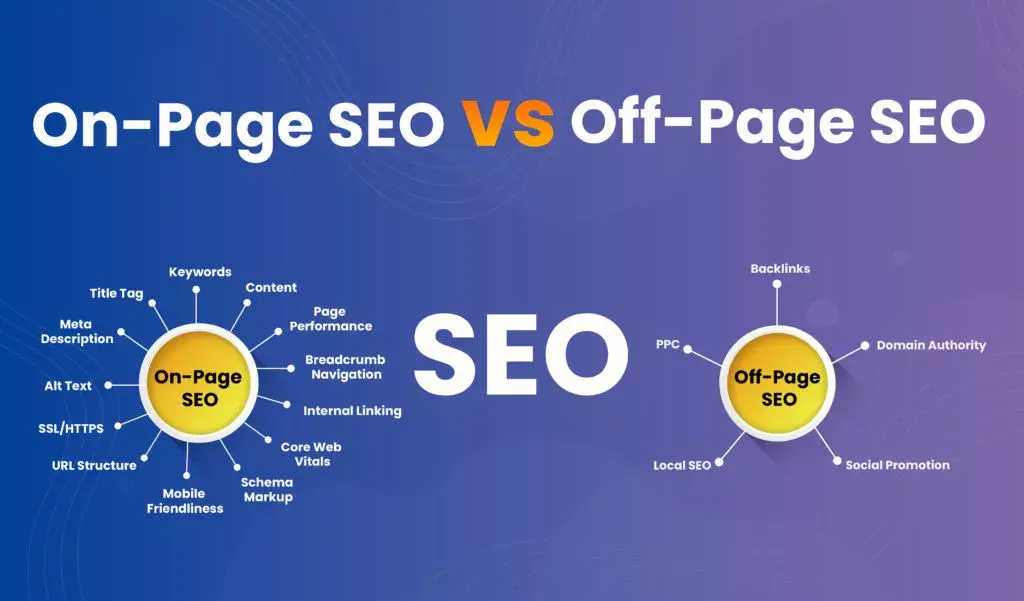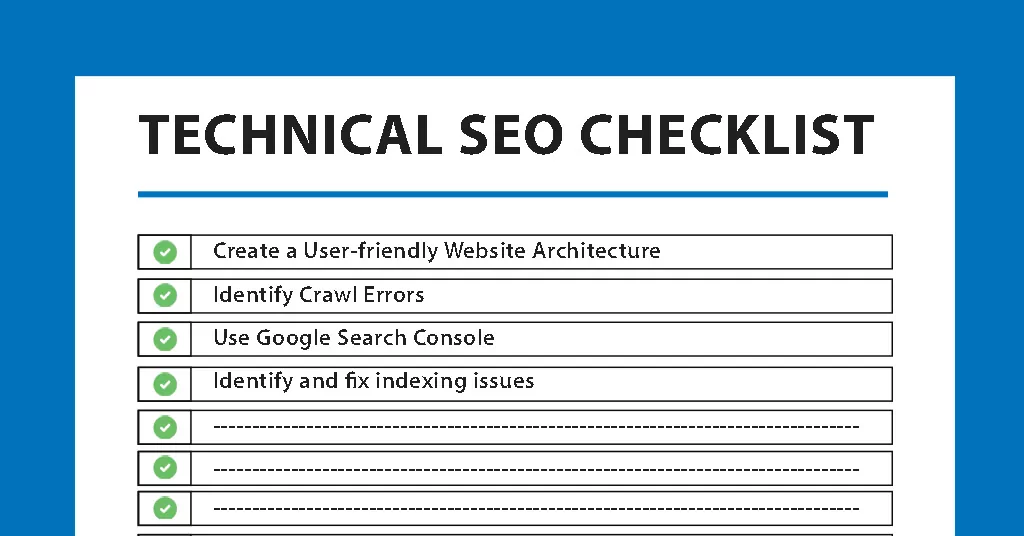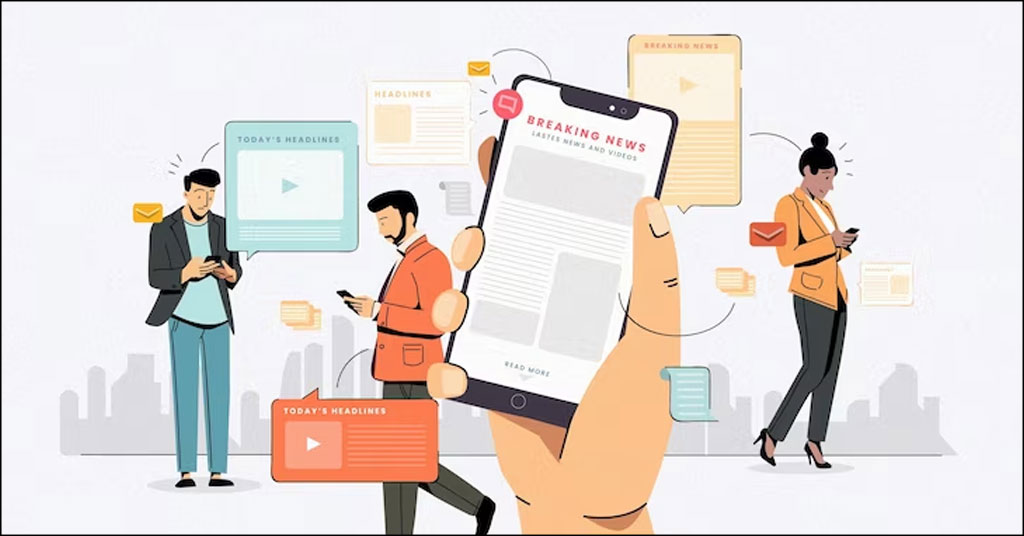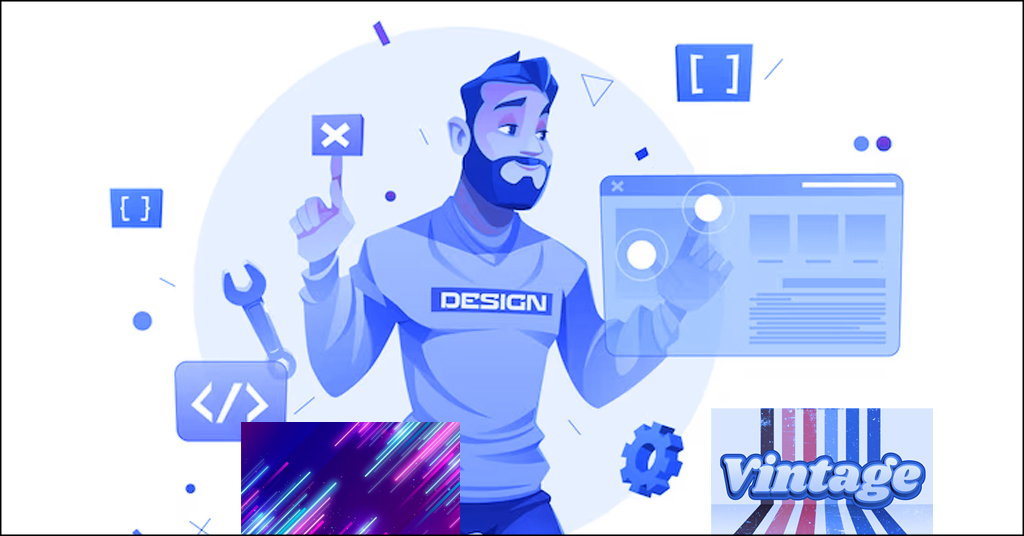A-Z you need to know about End-User License Agreement (EULA)
Table of contents
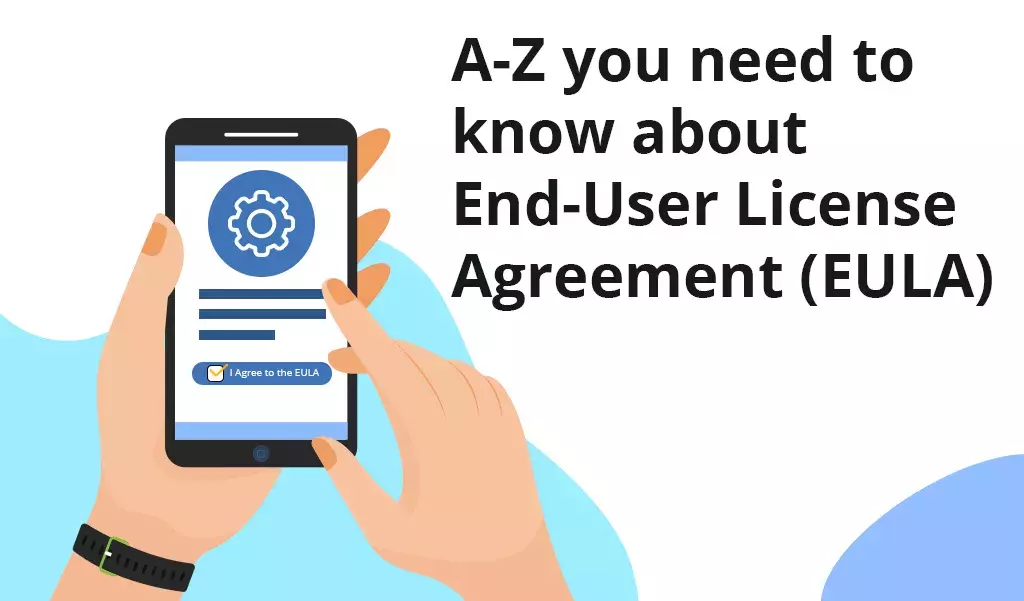
A contract between a software developer or a licensor and the software’s end-user is termed as EULA (End User License Agreement). You can also define it as a legally binding agreement between the owner of a software and the end-user.
Generally speaking, it gives a user the right to use the software application in some manner and is presented to him or her during the installation or the setup stage.
This agreement is crucial to the relationship between the developers and the users and contains information or clauses that describe the rights of the developer regarding how they control, restrict, or eliminate user activity from their software. Additionally, the EULA also gives the owner the right to remove the person from further use of the software, if the user breaks the agreement.
However, without this agreement, the owners of the application are vulnerable to the way the users interact with their application and leave themselves exposed to liabilities.
Apart from EULA, this agreement also has a number of different names that include, licensed application end-user agreement, software license agreement, licensing agreement, end-user license agreement, end-user agreements, click-wrap license, shrink-wrap license, and browse-wrap license.
In this post, let us look into more information about EULA, like when it is needed, the common clauses included in it, and its advantages and issues with EULA if you wish to get one for your application. So, let us start with the first point.
When do you need an End User License Agreement?
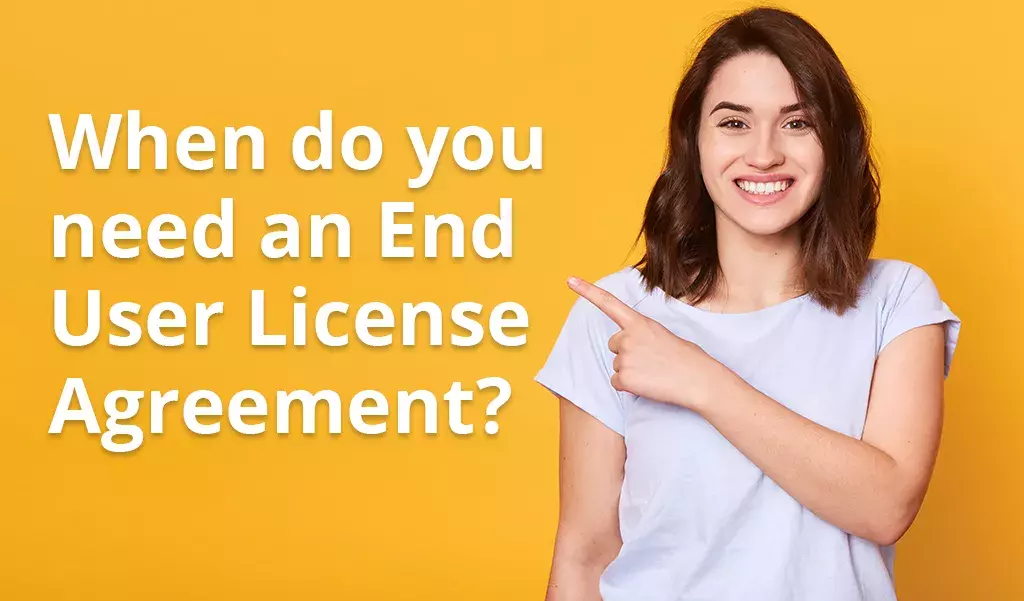
Your work is essentially copied onto the user’s computer or personal device, whenever he or she downloads your software application.
So, to maintain control over how your application should be used, including an end-user license agreement is a must. It protects your rights and is also critical to set rules of use as well as manage the expectations of the end-user.
In general, by having a EULA, you can easily explain what the users of your software are allowed and are not allowed to do while providing the conditions under which their access might be terminated or limited.
You will also need this agreement when you need to make legally required disclosures related to consumer rights having different user levels like registered or non-registered, or if your platform allows the users to sell or trade with others. While some other instances like participating in affiliate programs or providing software that when misused can cause potential harm also generate the need for this agreement.
Most importantly, if your software is designed to facilitate or process payments or any other sensitive user data, a EULA is a must.
Ultimately, including an end-user license agreement is a must when you are distributing software to customers to protect you from copyright infringement and other misuse of the software.
What are the common clauses for the End User License Agreement?
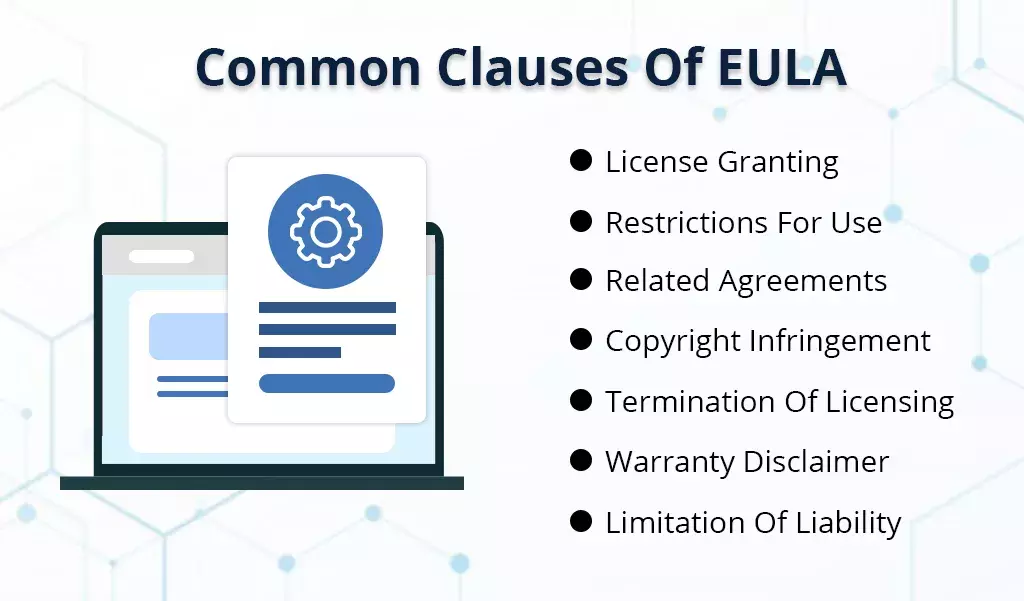
There are some common and most important clauses that every owner must include in his or her end user license agreement in order to get the user to accept it. These clauses include:
- License Granting
The primary purpose of EULA is to grant the user the right to use the software while highlighting the terms of use and whether the user is allowed to use it within the commercial environment or for personal use only.
This section of EULA mainly includes the non-exclusive and non-transferable aspect which means that the user agrees not to sell, share, distribute, or sublicense the software by accepting it.
Whereas, it further states that the user is permitted to create a backup copy of the software for recovery purposes but again this cannot be shared under any circumstances.
- Restrictions for use
This is the important section of EULA that highlights what the user can and cannot do with the software, hence, it needs to be fully understood. As this clause covers all the bases of what activity the owner wishes to limit, it tends to be the longest and most detailed section in this agreement.
In this part, you will see common restrictions of use that include the restriction on things like copying the software or any portion of it into multiple devices, using it to break laws, disabling any security measures, or reverse-engineering the software to reproduce it.
This is a pretty self-explanatory section that can be easily understood and if the user does not agree to the restrictions then he simply can’t use the software.
- Related Agreements
Though Eula directs all the guidelines regarding the usage of the software, it should also include other legal agreements like the Privacy Policy or the Terms and Conditions agreement. While the owner can also have other agreements placing restrictions on the usage of the app, or place links to all of those agreements that are close to the end-user license application. Placing those links at the bottom allows the user to access all of them at once when viewing the EULA.
- Copyright Infringement
It is always important to include a copyright infringement section that informs the user that the materials in this software are protected under copyright laws because infringement issues are basically common when you are dealing with software.
Here, it is stated that what can happen if a user commits copyright infringement and made clear to the user that if any copyright issue infringement takes place, the user will be held responsible for any legal issues arising from the infringement.
- Termination of Licensing
This part of the end-user license agreement is responsible to give the vendor the right to terminate the use of the software and the grant of the license in the event of violations or other issues.
The termination of licensing clause is usually absolute where the owner has the right to terminate the end-user license without providing a notice period. This section generally grants a firm right to the provider of the software rather than the end user.
- Warranty Disclaimer
A disclaimer of warranties essentially highlights that the app is available as it is and the developer or the owner is not responsible for making any changes or improvements to furnish the software in order to satisfy the end-user. This means the user gets what he sees and nothing beyond the minimum required by the law.
- Limitation of Liability
In this clause, it is basically stated that the owner or the provider of the software is not responsible for any damages that may occur as a result of the app. So, this is an important clause to include as it protects the owner of the software from any liabilities.
In other words, this clause clarifies that each party will be responsible for the occurrence of any erroneous events.
For instance, suppose that any user installs a particular app on his mobile device due to which his phone starts malfunctioning. So, this clause exclaims that the owner of the phone cannot pursue any liability from the provider though he is damaged due to the installation of the app.
However, it is important to highlight the important terms to be easy to recognize and read.
What are the Benefits or Advantages of having a EULA for your software?
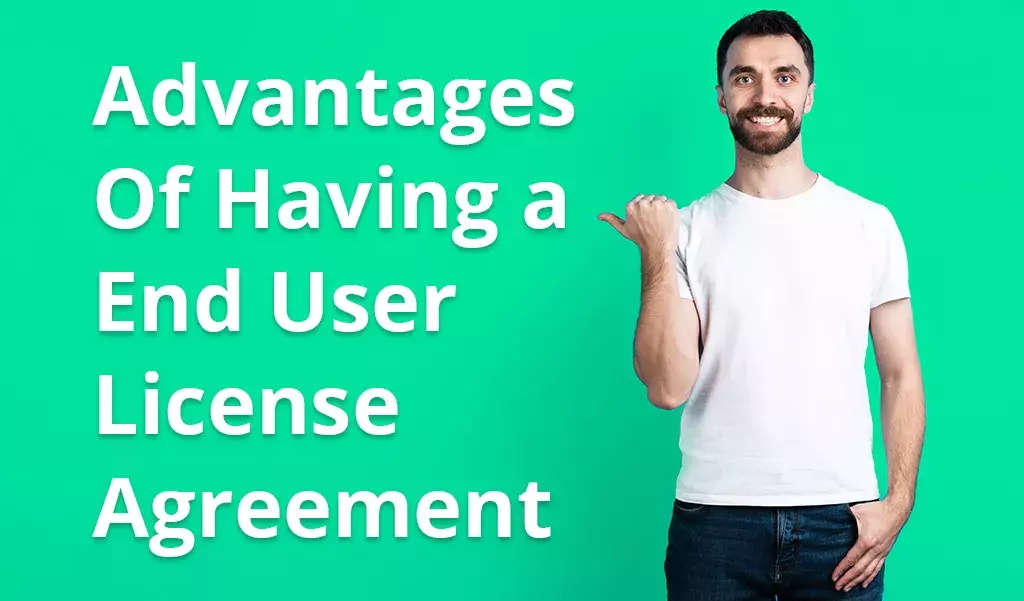
Regardless of whether it is a desktop application or a mobile application, below are some advantages that will demonstrate the need for having an end-user license agreement for your software:
- Though the end-user license agreement licenses your app, it does not sell the app to the user, eventually allowing the user to use your app according to your limits and restrictions instead of providing the user with full ownership of the app. This helps you maintain more control over the distribution and use of your app. You can also enforce other terms and conditions according to your wish regarding the use of your app when you are setting a stage for how the user will be able to interact with your app.
- The other main advantage of adding the end-user license agreement to your app is that you can restrict any undesirable or abusive uses of the app. Because, you can state in the agreement that your app cannot be used for illegal activities, or activities that involve spamming other users hacking servers, screen scraping, or reverse engineering in a clear and detailed manner. Moreover, you have the right to terminate the user, if he or she is found to be violating the legal agreement.
- Adding the end-user license agreement including a clause of limitation to liability to your app allows you to limit your liability and it is very important to do so as an app developer. Because, if you fail to do so, you will potentially open yourself as well as your company up to lawsuits, which even though may not be so serious of course time-consuming and financially burdening.
- A EULA allows you to add a disclaimer of warranties clause that highlights the fact that the app will be available as it is because when someone installs your app, that particular individual may have expectations such as 100 % up-time or completely zero bugs in the coding of the app that you may not be able to meet. Hence, including this agreement with this kind of clause will prohibit the user from holding you responsible for his or her lost data or sales and protect you in a realistic manner that your app is not 100 % perfect.
- The end-user license agreement is not only a place for granting a license but it is also great for helping you maintain your right to revoke licenses. Because it includes a clause that highlights that you can any time and for any reason, terminate the licenses and maintain full control over your app. In addition, let the users be aware of the fact that they don’t have endless access to your licenses, especially, in the event a dispute arises. Hence this agreement provides you with many advantages where you can maintain control over your app and also be legally safeguarded against lawsuits.
What are the issues with the EULA?
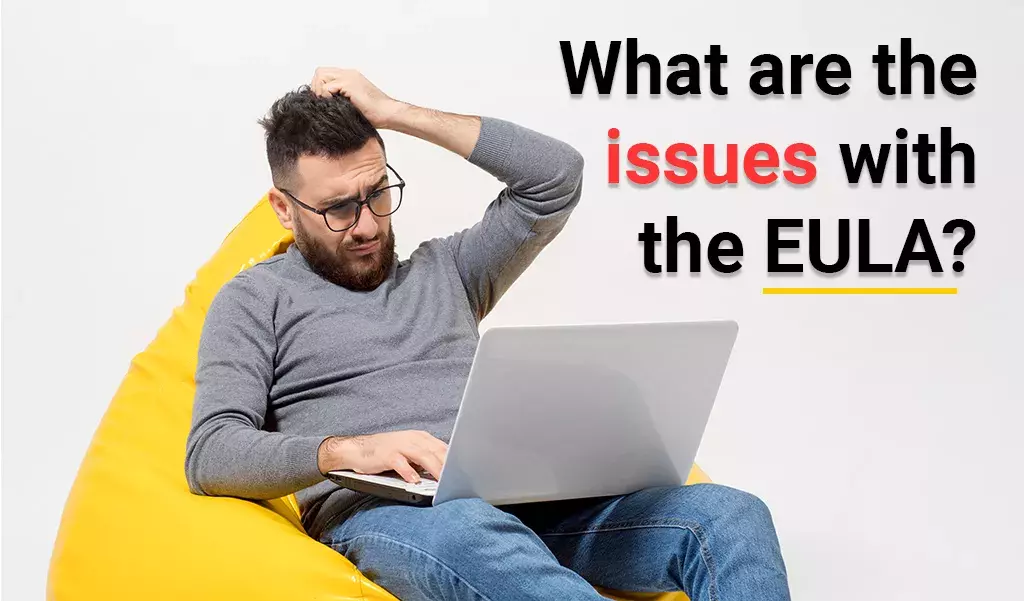
Though there are no major issues considering the end-user license agreement, we would still like to highlight the following.
- Length: Most of the end-user license agreements are extremely long while some can even extend up to tens of pages filled with legal jargon that most users are not interested to read and don’t understand document either.
- The terminology used: It is hard to interpret what an end-user license agreement is telling you due to the terminology used in it. In order to understand it, you may need extensive research into reading a EULA as the majority of its content is difficult to understand.
- Click-through aspect: The EULA is presented in a click-through format to the user that must agree to its terms and condition in order to install the software. As EULA generally presents itself in the form of a small window where only the initial part is present with ‘I agree’ or ‘disagree’ buttons at the bottom, the customer simply clicks on ‘I agree’ without knowing what they are agreeing to.
The end-user license agreement is the most important document between the vendor and the user that allows the user to use the intellectual property of the software publisher while agreeing to the terms of use provided by the owner of the software. If in case, the provider of the software is suspicious about the terms and conditions of the agreement not being followed, he is most likely to audit.
Hence, according to any app development company, understanding the content of this document is of crucial importance to the users to ensure that they are using the software correctly. Whereas, it is also essential for the software publisher to draft the document in a manner that protects the interests of the user and also primarily protects himself from any form of infringement. So, all in all, it is simply good to make sure that you have a EULA that covers everything to be better safe than sorry.

